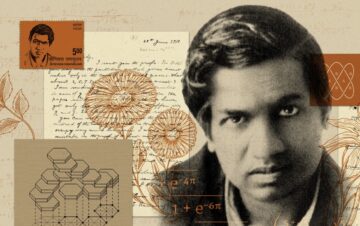Jordana Cepelewicz in Quanta:
 One afternoon in January 2011, Hussein Mourtada(opens a new tab) leapt onto his desk and started dancing. He wasn’t alone: Some of the graduate students who shared his Paris office were there, too. But he didn’t care. The mathematician realized that he could finally confirm a sneaking suspicion he’d first had while writing his doctoral dissertation, which he’d finished a few months earlier. He’d been studying special points, called singularities, where curves cross themselves or come to sharp turns. Now he had unexpectedly found what he’d been looking for, a way to prove that these singularities had a surprisingly deep underlying structure. Hidden within that structure were mysterious mathematical statements first written down a century earlier by a young Indian mathematician named Srinivasa Ramanujan. They had come to him in a dream.
One afternoon in January 2011, Hussein Mourtada(opens a new tab) leapt onto his desk and started dancing. He wasn’t alone: Some of the graduate students who shared his Paris office were there, too. But he didn’t care. The mathematician realized that he could finally confirm a sneaking suspicion he’d first had while writing his doctoral dissertation, which he’d finished a few months earlier. He’d been studying special points, called singularities, where curves cross themselves or come to sharp turns. Now he had unexpectedly found what he’d been looking for, a way to prove that these singularities had a surprisingly deep underlying structure. Hidden within that structure were mysterious mathematical statements first written down a century earlier by a young Indian mathematician named Srinivasa Ramanujan. They had come to him in a dream.
Ramanujan brings life to the myth of the self-taught genius. He grew up poor and uneducated and did much of his research while isolated in southern India, barely able to afford food. In 1912, when he was 24, he began to send a series of letters to prominent mathematicians. These were mostly ignored, but one recipient, the English mathematician G.H. Hardy, corresponded with Ramanujan for a year and eventually persuaded him to come to England, smoothing the way with the colonial bureaucracies.
More here.
Enjoying the content on 3QD? Help keep us going by donating now.
